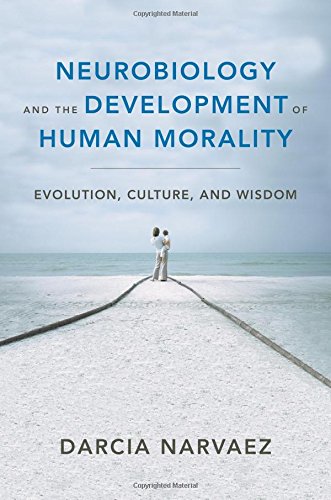The Single Most Important Thing To Know About A Baby
A baby’s most significant characteristic should influence how we treat her.
A baby is not ready to be out in the world at the time of birth, even full-term birth (around 40 weeks, though babies vary in length of self-directed womb residence by about 50 days). A human baby does not look like a newborn of other animals—with bones hardened and in place and capacities for self-provisioning—until 18 months of age! That is, to look like a newborn of other animals, babies should be in the womb another 18 months. Yes, it’s a shocker, but this is what we have learned comparing the developmental course of humans against other mammals.
What does 18 months “early” mean for baby’s care? You can imagine that there are multiple ramifications of just this simple finding.

For those first 18 months, babies expect “an external womb” (exterogestation), which is what the evolved nest components provide. Babies cannot self-regulate and need caregivers to train their systems to do so (e.g., by calming them quickly so the systems learn to make that the “norm”). Adults should keep them in an optimal state so that the systems continue to grow and develop normally. Stressing babies means that energies shift to survival (more later).
A baby’s head bones do not fuse until around 18 months to allow for lots of brain growth—which happens from evolved nest components of calming care, lots of affectionate touch, carrying, breastfeeding.
Yet most adults in our country seem not to be aware of the needs of babies, starting with many medical professionals who deal with babies harshly, as if they are not recording their experiences in their body and brain systems. What should professionals and all of us realize? Stressing babies out will damage their immature, still-developing systems—neuroendocrine, immune, neurotransmitter, stress response—all of which can be affected lifelong.
What are adults in the know doing? They have launched efforts to attend to the needs of babies in the first 1000 days of life. It is easier to do this in places where universal health care is expected and paid for by governments, like the United Kingdom.
Now you know too: Babies need womb-like care after birth for 18 months. They should be kept calm and comforted while various neurobiological systems are completing their functionalities.
After the 18 months, children’s sensitive development lasts till about age 3 (first thousand days), though the brain is still growing significantly till age 6 or so. The evolved nest matches up with the needs of children as they develop.
Things to remember:
(1) A baby is still like a fetus (compared to other animals) until 18 months of age, so we need to provide an “external womb” experience—calm, comforting, physically present
(2) A young child is a dynamic system whose personality and health are being socially constructed by caregivers, “brick by brick” or phase by phase, according to experiences in the first years of life
(3) We don’t want to distress young children (especially in any routine, intense, or long-term ways), especially in the first 3 years, but gently guide the development of self-regulation
Understanding and practicing good early care will ensure the proper development of all systems (neurobiological and social) and the blossoming of a unique intact spirit.
References
Dettwyler, K.A. (1997). When to wean: Biological versus cultural perspectives. Clinical Obstetrics and Gynecology, 47(3), 712-723.
Lanius, R.A., Vermetten, E., & Pain, C. (Eds.) (2010). The impact of early life trauma on health and disease: The hidden epidemic. New York: Cambridge University Press.
Montagu, A. (1968). Brains, genes, culture, immaturity, and gestation. In A. Montagu (Ed.) Culture: Man’s adaptive dimension (pp. 102-113). New York: Oxford University Press.

